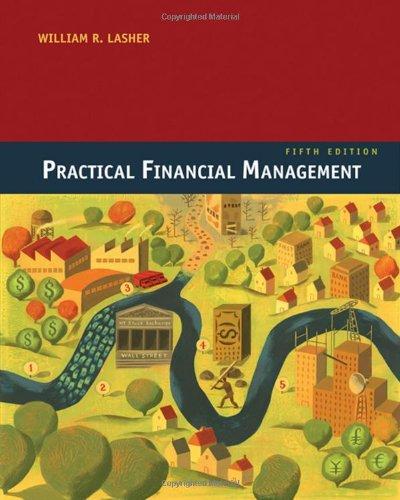10. Sam Dozier, a very bright computer scientist, has come up with an idea for a new...
Question:
10. Sam Dozier, a very bright computer scientist, has come up with an idea for a new product. He plans to form a corporation to develop the idea and market the resulting product. He has estimated that it will take him and one employee about a year to develop a prototype and another year to bring a working model to market. There wil be no income during those years. After that he expects sales to grow rapidly, estimating revenues of $700,000, $1,500,000, and $5,000,000 in the third, fourth, and fifth years, respectively.
Starting the project will require research equipment costing about $500,000 which will be depreciated for federal tax purposes under the MACRS system (see page 469). Beyond that it will take another $400,000 in tax deducible expenses to get going.
Sam thinks he can fund the development work including supporting himself and paying an employee with about $200,000 per year. Once sales begin in the third year, direct costs will be 40% of revenues and indirect costs, including salaries for Sam and all employees, will be $300,000, $500,000, and $1,800,000 in the third, fourth, and fifth years, respectively. The nature of the business is such that working capital requirements are minimal. A net investment of $200,000 in the third year is expected to suffice. Sam has $1,500,000 saved which he thinks is enough to launch and operate the business until it begins to generate income.
Sam plans to sell the business at the end of the fifth year. He thinks it will be worth $2,500,000 at that time.
The business will be a C-type corporation subject to federal corporate income taxes (see page 48). Sam will be the sole stockholder and will be subject to federal (personal) capital gains tax when he sells the company (assume the top capital gains rate discussed on pages 43–44). Ignore state taxes.
a. Develop a cash flow estimate for Sam’s business. Include the effect of tax loss carry forwards as well as any capital gains taxes he will pay on its sale. Does Sam have enough cash to fund this venture without contributions from outside investors?
b. Calculate the project’s NPV and IRR (a financial calculator is recommended).
Assume the cost of capital is 12%. Is the venture a good investment of Sam’s time and money?
Step by Step Answer:







